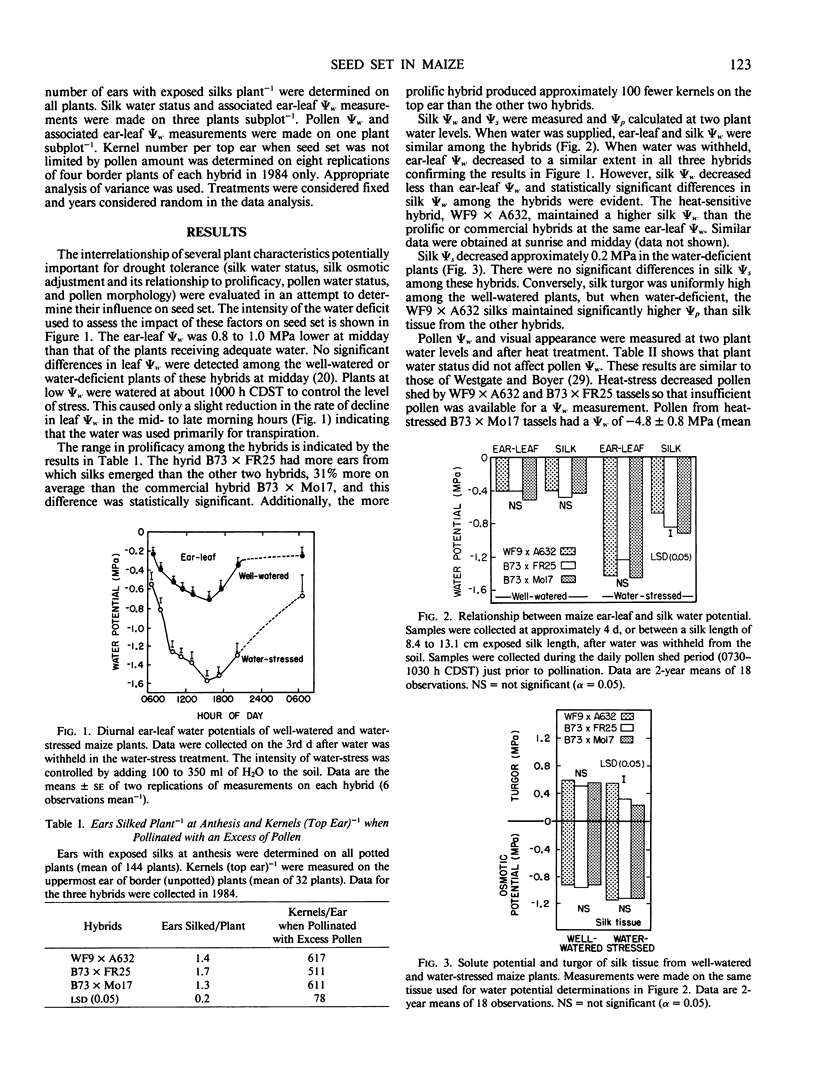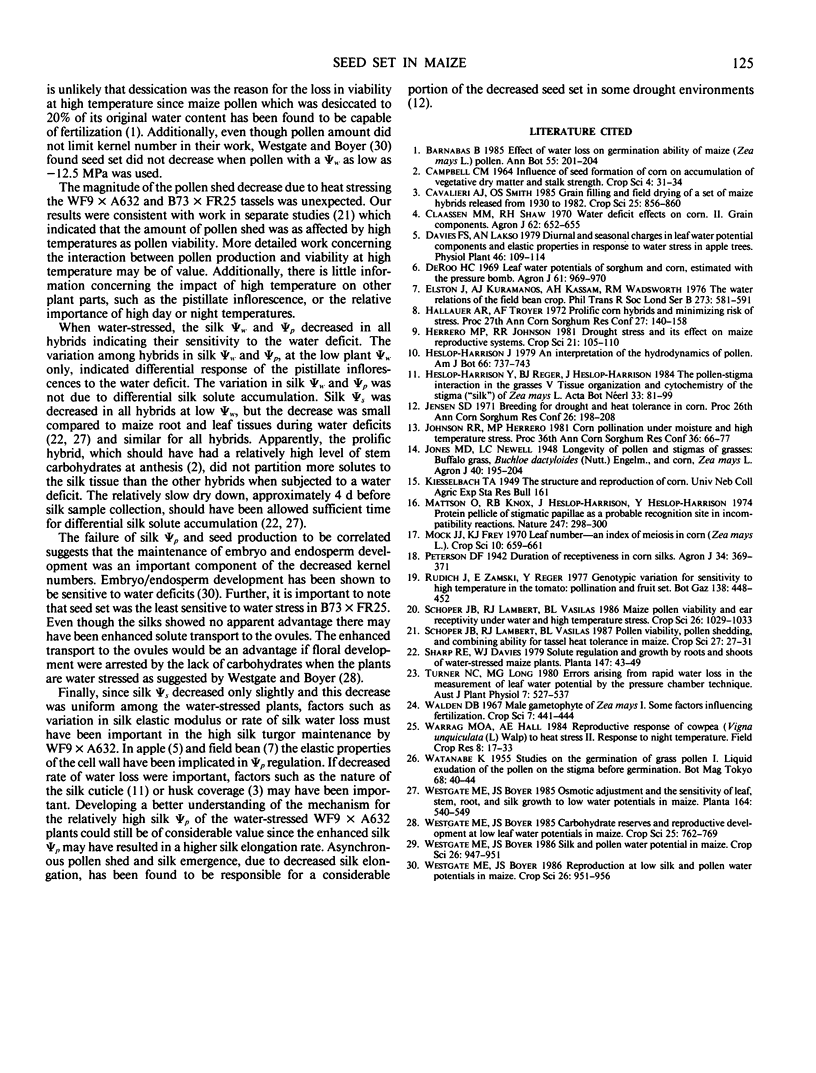Abstract
In maize (Zea mays L.) large decreases in kernel number result when low water potentials (Ψw) and high temperatures occur during pollination. To gain insight into the basis for the decreased seed set, silk, pollen, and ear-leaf Ψw, the capability for silk osmotic adjustment, and pollen appearance were measured to determine their relationship to seed set. A multiple-eared or prolific (high carbohydrate availability to the pistillate inflorescence) hybrid (B73 × FR25), a heat sensitive hybrid (WF9 × A632), and a commercial hybrid (B73 × Mo17) were studied. A cross-pollination experiment, with pollination limited by pollen amount, was conducted to determine the impact on seed set of water and heat stressing the tassel and water stressing the ear. At low Ψw, silk Ψw and seed set were decreased whereas pollen Ψw, appearance, and viability were unaffected. High temperature resulted in a 2 megapascal decrease in pollen Ψw, visually damaged pollen being shed, decreased pollen viability, and, in two of the hybrids, substantially decreased pollen shed. Prolificacy did not result in increased silk solute accumulation but did result in superior seed production by the pistillate inflorescence at low Ψw. The magnitude of the decrease in silk solute potential was small (0.2 megapascal) and similar for all genotypes. One hybrid maintained a relatively high silk turgor but this hybrid also decreased the most in seed production when the pistillate inflorescence was water deficient. These results indicated an adverse effect of high temperature on pollen development, a positive relationship between seed production and silk water status, and no advantage to high silk turgor after silk emergence in maintaining seed production. Additionally, there was no evidence of variation in silk solute regulation capability among hybrids which varied in prolificacy, a trait important in drought tolerance, but the seed production of the pistillate inflorescence of the prolific hybrid was least affected by water deficit.
Full text
PDF






